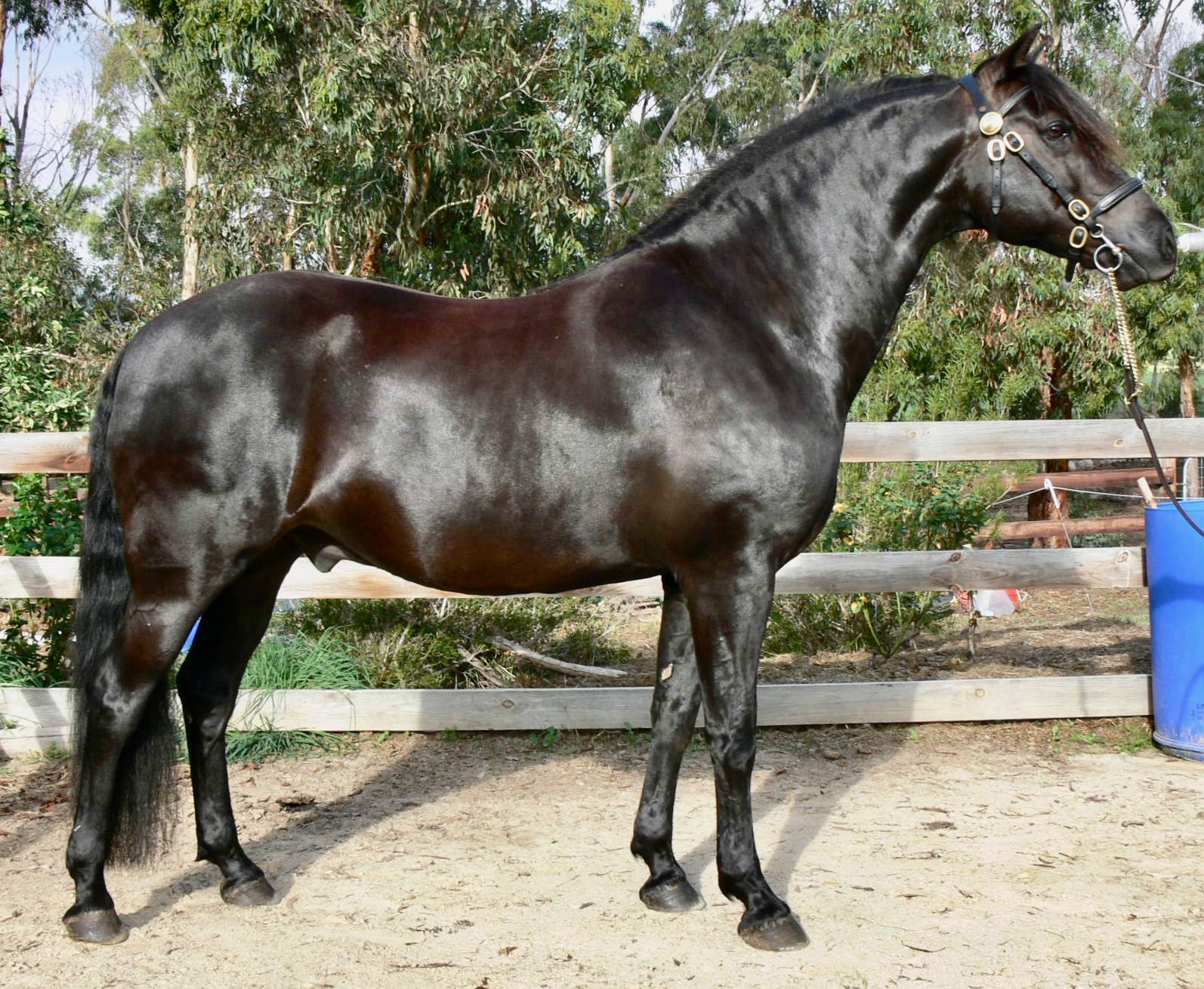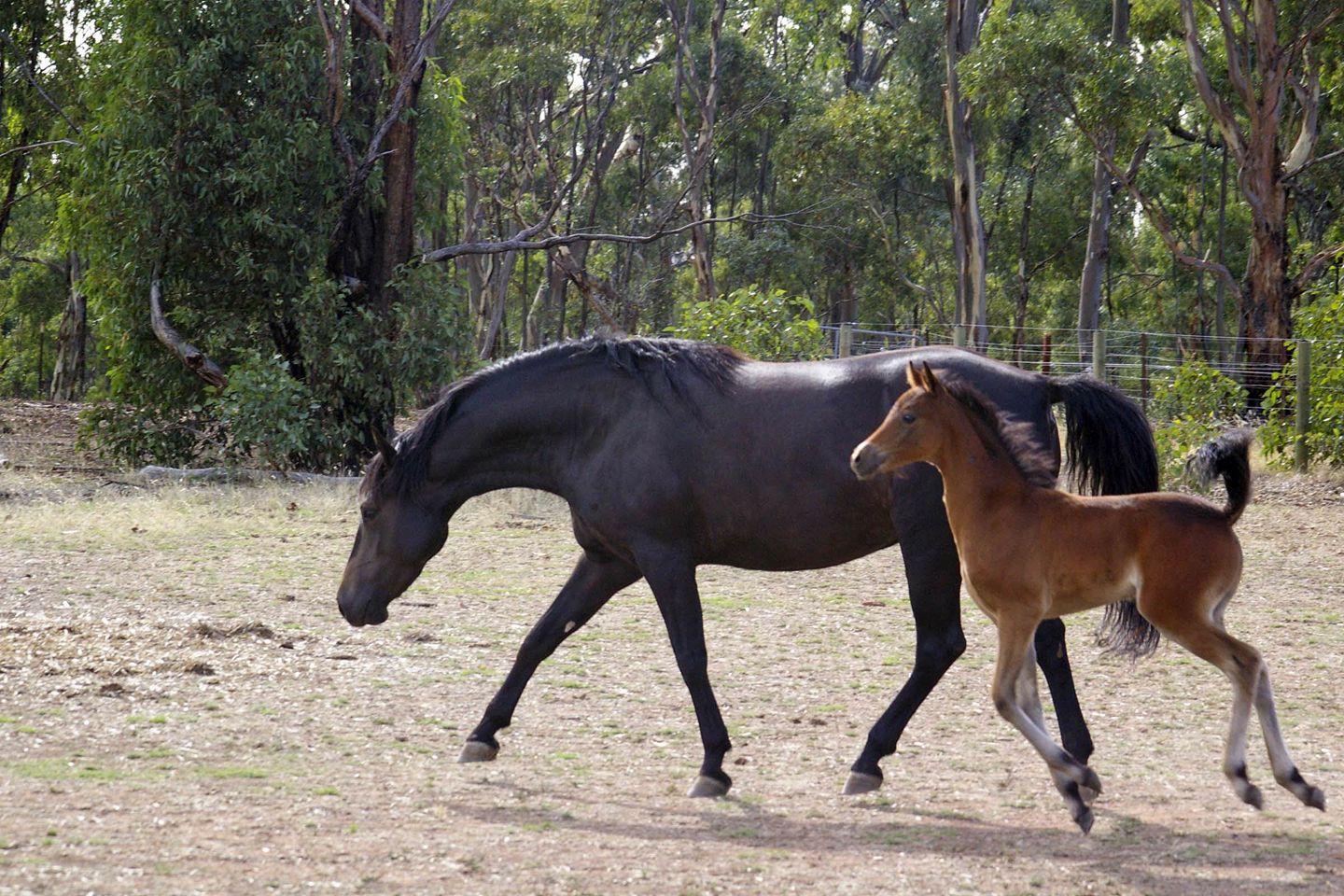
RARE BREEDS TRUST OF AUSTRALIA
powered by TidyHQHorses : Morgan Horse
Horses : Morgan Horse
Country of Origin
United States of America
Australian Status

International Status
In its home country the Morgan Horse is quiet popular but the Traditional Morgan or Lippitt Morgan is considered CRITICAL. Australian's Morgan population has a high percentage of these old bloodlines.
Uses
Dressage, show jumping, western, cutting, endurance, stock work, pleasure and driving.
Breed Traits
Known for their courage and generosity and for their stylish appearance; they are also greatly respected for their strength, stamina and intelligence. The average size is 14.2hh to 15.2hh, some individuals may go over or under. Naturally high action, a high-held crested neck, well defined head with small ears, large, widely spaced eyes, slightly dished nose and a small muzzle. Compact bodies with well-sprung ribs, well-muscled hindquarters and chest and a short back. They are known for their thick, silky mane and tail and their coat colour is predominantly chestnut, bay, brown and black, but there are also palominos and buckskins and even a few grays.
History
The Morgan Horse, America’s first national breed, sprang from one bay stallion, “Figure”, who is believed to have been foaled near Springfield, Massachusetts, in the American northeast in 1789. Later, Figure became known as ‘the Justin Morgan horse’ and then ‘Justin Morgan’. Figure put his stamp on his progeny, passing on his willing nature, intelligence, strength and speed to his offspring irrespective of their dam. His progeny became known as Morgan horses. All registered Morgans trace to Figure. As well as establishing the Morgan breed, Figure’s descendants were regularly used as foundation stock for the other, newer American breeds of horse, namely the Standardbred, the American Saddle Horse, the Quarter Horse and the Tennessee Walking Horse. In 1909, the Morgan Horse Club was founded, later changing its name to the American Morgan Horse Association and the stud book was declared closed to outside blood as of January 1, 1948.
One genetic disease has been identified within the breed, Type 1 polysaccharide storage myopathy, an autosomal dominant muscle disease found mainly in stock and draft horse breeds caused by a missense mutation in the GYS1 gene. There is also the possibility of lethal white syndrome and the American Morgan Horse Association advocates genetic testing to identify carriers of these genetics, and advises owners to avoid breeding horses that are heterozygous for frame overo to each other.
History in Australia
First imported into Australia in the 1800s to improve trotter bloodlines and were known to have competed and broken records while racing in Australia. The first Morgans to be imported into Australia for the purpose of breeding purebreds arrived in 1974. Three horses came from America: the stallion Saddleback Sultan and the mares Saddleback Sundance and Green Meads Fashion.
Breed Organisation
- Morgan Horse Association of Australia. In 1990 the Morgan Horse Association of Australia Inc. (MHAA), which is recognised by the American Morgan Horse Association, was established to promote the Morgan horse in this country. The MHAA became incorporated on 21 January 1994.
- American Morgan Horse Registry. The MHAA Registry has reciprocity with the American Morgan Horse Registry, meaning it is the equivalent for this region, and Australian registered Morgans appear also in the AMHA.
Australian Population
2020 72 stallions; 205 mares
2022 72 stallions; 204 mares; 88 herds
Photo Credits
Top: Kindly supplied by the Morgan Horse Association of Australia Inc.
Middle: Morgan mare, Fernliegh Creek Etta James and her foal.
(new breed profile added updated 02/09/2020 A.Y.)
